|
Harvesting Bamboo in Japan My Collaboration with Two Master Craftsmen |
|
Harvesting Bamboo in Japan My Collaboration with Two Master Craftsmen |
 |
During the winter of 1994 and again in 1995 I had the opportunity to harvest madake in Japan with John Kaizan Neptune. Scouring the mountainside for suitable pieces is a daunting process. The hills are steep and rugged and covered with densely packed madake. Very few, however, will conform to the rigid specifications demanded by the traditional aesthetic for shakuhachi. In this picture, it's 40' straight down into a rocky gorge. |
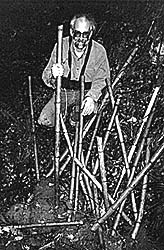 |
After a week of work, John and I managed to harvest 65 pieces. It's difficult to tell if any given piece will work as the roots are packed so tightly with dirt and cannot be assessed for quality until the ends are trimmed and thoroughly cleaned. |
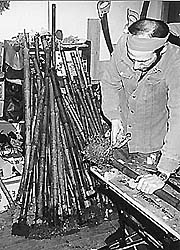 |
So we trimmed . . . |
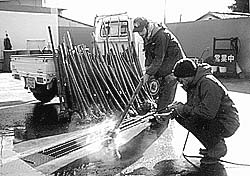 |
. . . and cleaned |
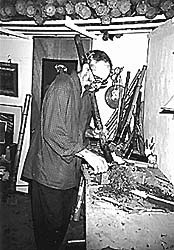 |
. . . and trimmed some more. In the end, only four of my pieces were considered to be OK. None were great. Finding and harvesting bamboo for shakuhachi is no simple task. But no regrets. It was my idea of an ideal vacation: crawling around on my hands and knees in the mountains surrounded by the bamboos and sharing the joy of it with a good friend. |
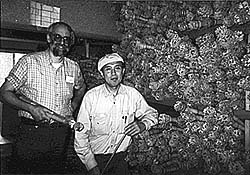 |
In February of this year, I will return to Japan at the invitation of Ginetsu Nakamura, one the last remaining shakuhachi makers who harvests all of his own stock. Nakamura-san has been making shakuhachi for over 30 years and has kindly offered to share with me all of the techniques uses in locating, digging and curing madake. |
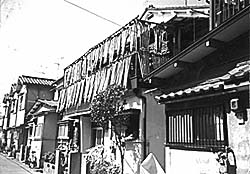 |
Bamboo roots drying in the winter sun at Nakamura's home. |
Flute Making Craft Manuals Request Information about Madaké Bamboo for Shakuhachi |